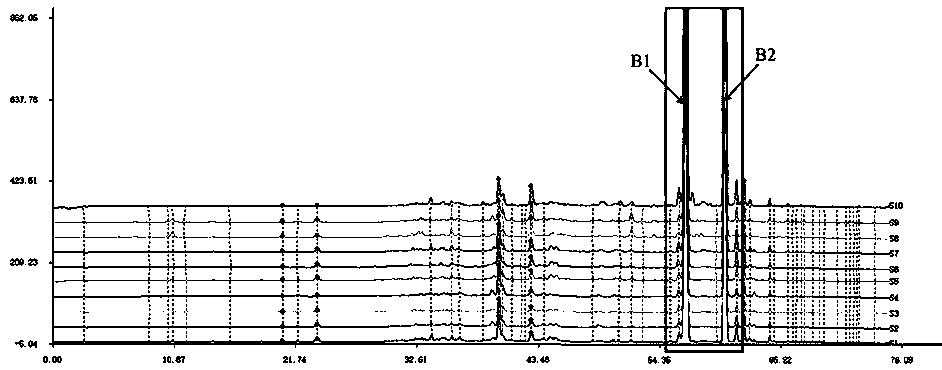Method for identifying litchi honey
A technology of lychee honey and vitex honey, applied in the field of food science, can solve the problems of high market price, rainy flowering period, damage to consumers' interests, etc.
- Summary
- Abstract
- Description
- Claims
- Application Information
AI Technical Summary
Problems solved by technology
Method used
Image
Examples
Embodiment Construction
[0027] Further description will be given below in conjunction with the accompanying drawings and embodiments.
[0028] 10 batches of litchi honey (L1-L10), Vitex twig honey (J1-J10) and rapeseed honey (Y1-Y10) samples were weighed 5 g each, fully dissolved with 30 mL of hydrochloric acid aqueous solution with a pH of 2, and directly injected into the Amberlite XAD−2 type adsorption resin chromatography column (25 cm × 2.5 cm), waited for the sample to be completely adsorbed at a slow flow rate, then rinsed with 75 mL of aqueous hydrochloric acid at pH 2, 100 mL of distilled water, and then rinsed with 100 mL of distilled water. mL of pure methanol for elution. After the eluted methanol solution was concentrated under reduced pressure and vacuum at 40 °C, the volume was adjusted to 2 mL with chromatographically pure methanol to obtain the test sample, which was stored at 4 °C until injection.
[0029] time
[0030] Establish the HPLC-DAD fingerprints of litchi honey,...
PUM
 Login to View More
Login to View More Abstract
Description
Claims
Application Information
 Login to View More
Login to View More - Generate Ideas
- Intellectual Property
- Life Sciences
- Materials
- Tech Scout
- Unparalleled Data Quality
- Higher Quality Content
- 60% Fewer Hallucinations
Browse by: Latest US Patents, China's latest patents, Technical Efficacy Thesaurus, Application Domain, Technology Topic, Popular Technical Reports.
© 2025 PatSnap. All rights reserved.Legal|Privacy policy|Modern Slavery Act Transparency Statement|Sitemap|About US| Contact US: help@patsnap.com



